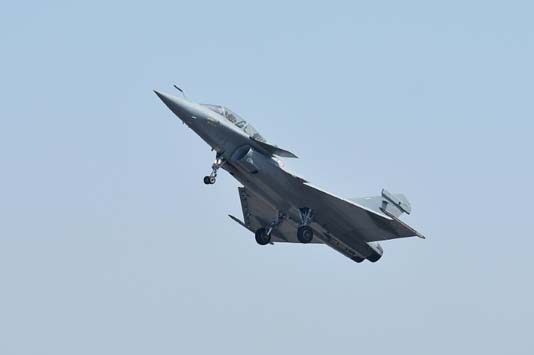PARIS, June 17, 2019 (BSS/AFP) – As European leaders prepare to formalise
Monday the launch of a next-generation combat jet, analysts warn the
continent’s air forces are increasingly outpaced by American and soon Chinese
aerospace industries that are swimming in cash.
President Emmanuel Macron will attend the opening of the Paris Air Show
where the defence ministers of France, Germany and Spain will sign the
cooperation framework for the Future Combat Air System (FCAS).
The new jet is part of a broader push to unify Europe’s military might and
reduce its reliance on US equipment, and the project will also include drones
and cruise missiles.
It will be spearheaded by Airbus and France’s Dassault Aviation, which aim
to have the plane in the skies by 2040, and other nations might sign on as
well.
Yet the jet already has a rival on home turf — Britain’s Tempest stealth
fighter project, which Italy and the Netherlands have also joined.
And European defence spending still lags far behind the billions being
spent in the US as well as China, which has made no secret of wanting to bulk
up its military muscle.
European firms also face much bigger American rivals, underscored by the
mega-merger of Raytheon and United Technologies announced earlier this month.
“There’s an increasingly glaring imbalance between the way Europe is
constructing its aeronautic, space and defence industry, and that way it’s
happening in the two blocs that are challenging it, the United States and
China,” said Philippe Plouvier at the Boston Consulting Group in Paris.
– Smaller players –
US President Donald Trump has further bolstered defence spending that
should reach “an extremely high level this year, $700 billion compared with
$200 billion in 2002,” Plouvier said.
It has been a boon to industry leaders like Lockheed Martin, Northrop
Grumman and General Dynamics, not to mention the future Raytheon-UTC.
China has also been investing heavily, becoming the second-biggest defence
spender last year with some $250 billion.
In comparison, the five biggest European nations — Germany, France,
Britain, Italy and Spain — spent a combined $200 billion last year,
according to IHS Markit analysts.
While European firms have also been consolidating, such as the purchase of
Zodiac Aerospace by equipment maker Safran, in large part it’s a response to
dwindling commercial aircraft projects.
Airbus, for example, has reined in its research and development ambitions
in favour of incremental upgrades to its workhorse A320 passenger jets.
“The prospect of fewer big projects is pushing firms to seek out new
opportunities… to resist pricing pressures” and encouraging mergers and
acquisitions, said Nicolas Beaugrand, an aviation expert at Alix Partners.
But forging a heavyweight European
competitor to US defence giants has proven elusive.
Airbus and BAE Systems tried a merger back in 2012 that would have created
a massive firm with equally balanced commercial and defence operations, but
opposition from Germany scuppered the deal.
Then there is the threat of emerging Chinese competition.
Even if China’s homegrown aerospace firms are a decade or more away from
becoming a threat in the defence sectors, the long development cycles for new
technologies means European companies can’t afford to wait.
– Scrambling for cash –
Analysts point to another problem holding back European players: limited
access to cash to finance the development of new technologies that will be
key to ensuring the continent’s military deterrents.
“When you compare Airbus, Safran or Thales to the big American players,
you see that ours have stronger growth, maybe even bigger profits, but on the
other hand they don’t generate lots of cash — they use all their cash to
finance their growth,” Plouvier said.
Airbus produces some $4 billion in free cash flow a year, while Boeing
generates around $12 billion.
The combination of Raytheon and UTC, bringing together missiles and
electronics with Pratt & Whitney engines, would have sales of nearly $75
billion producing some $8 billion in cash flow.
“If you don’t have the cash, you don’t modernise, which means less
capacity to self-finance research or the digital transformation, so you’re
not preparing correctly for the future,” Plouvier said.
But European firms often have to accept low profit margins on defence
projects, especially when EU nations wrangle over how much each should pay
when projects go over budget — as is most often the case.
With the A400M military transport plane, for example, Airbus had to
negotiate with governments for two years before it could stop the programme
from haemorrhaging cash because of production difficulties.
“You don’t see that in the US. All the programmes go wildly over budget
but the companies still get a profit margin of 15 percent,” Plouvier said.
US firms can also use the cash from military businesses to help lower the
prices of their commercial aerospace equipment, putting further pressure on
European rivals.
“That means European players maintain their industrial base not from
defence but from commercial aviation. We’re standing on just one foot, on our
commercial industry,” Plouvier said.



